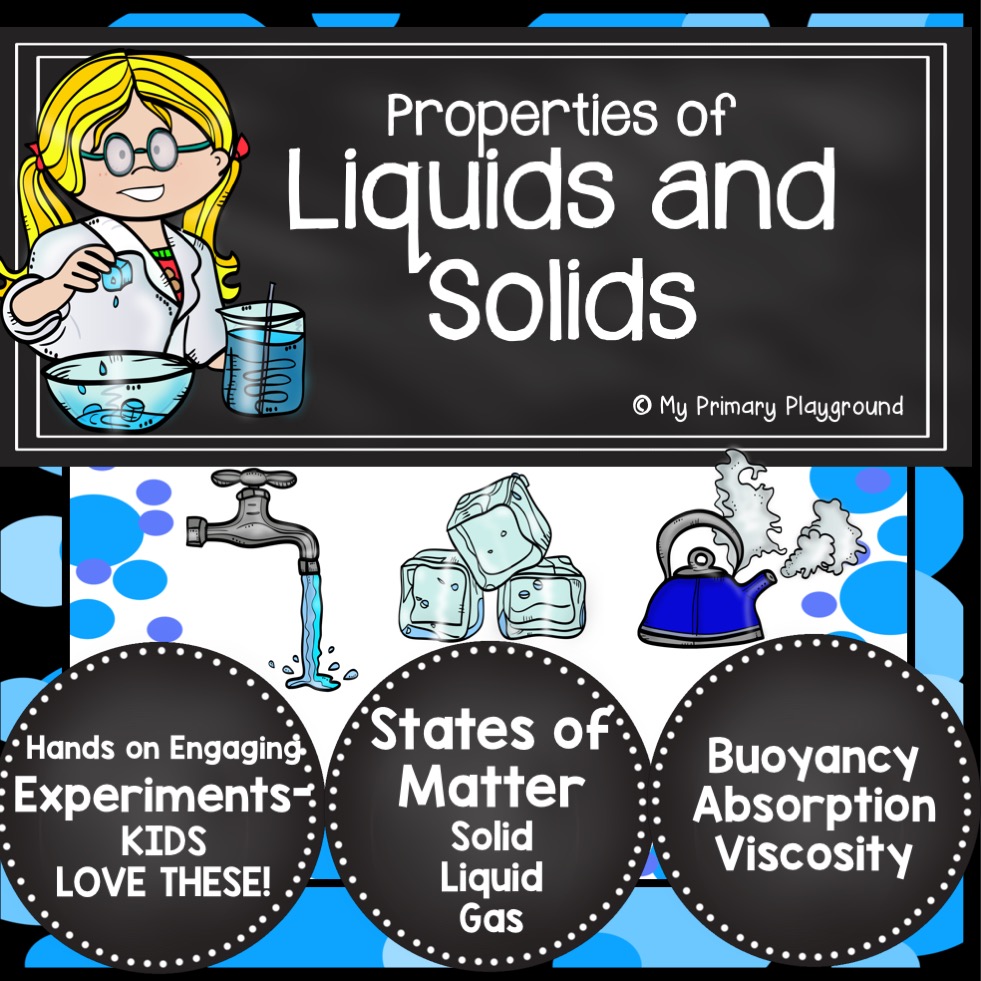Properties of Liquids and Solids
$6.00
Grade Two Matter and Energy: Properties of Liquids and Solids
**Meets Ontario Curriculum Expectations**
**THIS UNIT CAN ALSO BE PURCHASED IN A BUNDLE OF ALL MY GRADE TWO SCIENCE UNITS IN MY STORE**
This Product Includes Worksheets on:
What is a Liquid? What is a Solid?
Sorting Liquids and Solids
Identifying common liquids and solids at home and school
Properties of Liquids and Solids
Absorption (with 2 experiments)
Buoyancy (with 2 experiments) Sink or Float?
Viscosity – How does a liquid flow?
What does a liquid feel like? (Oil Spills)
Classifying Liquids (Transparent, Translucent, Opaque)
Stacking Liquids/ Weight of Liquids
Word Searches
Liquids to Solids, Solids to Liquids…. Over 10 experiments included
International Safety Symbols
Safety with Liquids
States of Matter (Solid, Liquid, Gas)
Definition cards included for 10+ words (build your science vocabulary wall)
Outcomes Covered:
1.1 Assess the ways in which liquids and solids in the home are used, stored, and disposed of in terms of the effect on personal safety and the health of the environment, and suggest responsible actions to replace inappropriate practices
1.2 Assess the impacts of changes in state of solids and liquids on individuals and society
2.1 Follow established safety procedures during science and technology investigations
2.2 Investigate the properties of liquids (e.g. conduct experiments to compare the rate at which different liquids flow) and solids (e.g., conduct experiments to find out ways in which solids can be changed)
2.3 Investigate, through experimentation, interactions that occur as a result of missing and/or dissolving liquids and solids (e.g., salt and water, sand and water), liquids and liquids (e.g., oil and water), and solids and solids (e.g., salt and sand)
2.4 Use scientific inquiry/experimentation skills to investigate liquids and solids in terms of their capacity for buoyancy (e.g., wood floats, coins sink) and/or absorption (e.g., paper towel absorbs liquid, plastic wrap repels liquid)
2.5 Use technological problem-solving skills, and knowledge acquired from previous investigations, to design build, and test a structure that involves interactions between liquids and solids (e.g., an object that floats)
2.6 Use appropriate science and technology vocabulary, including clear, opaque, runny, hard, greasy, and granular, in oral and written communication
2.7 Use a variety of forms (e.g., oral, written, graphic, multimedia) to communicate with different audiences and for a variety of purposes
3.1 Identify objects in the natural and built environment as solids (e.g., sand, ice, rocks, tables, sidewalks, walls) or liquids (e.g., water, tree sap, milk, gasoline)
3.2 Describe the properties of solids(e.g., they maintain their shape and cannot be poured) and liquids (e.g., they take the shape of the container they are in and can be poured)
3.3. Describe the characteristics of liquid water (e.g., it takes the shape of the container it is in) and solid water (e.g., ice floats), and identify the conditions that cause changes from one tot the other (e.g. water turns to ice when the temperature goes below zero; ice turns to water when heated)
3.4 Identify conditions in which the states of liquids and solids remain constant (e.g., solids remain solids when broken; liquids remain liquid wen poured) ad conditions that can cause their states to change (e.g. liquids may freeze when the temperature drops; solids may melt when heated)
3.5 Describe some ways in which solids and liquids can be combined to make useful substances (e.g., flour and water make paste, milk and chocolate powder make chocolate milk)
3.6 Explain the meaning of international symbols that give us information on the safety of substances (e.g., a skill-and-crossbones symbol means that the substance is poisonous; a flame inside a hexagon means that the substance is flammable)
Working on this unit was fun for both my students and myself. We were able to explore solids, liquids and gases, solid matter, gas matter and liquid matter. My students loved the experiments were we took the three states of matter and altered them from a liquid to a solid, a solid to a liquid, a gas to a liquid, a liquid to a gas. This unit was great to create, but the real joy was on the students faces when they learned through hands on experimentation. I hope your class enjoys it too!
Terms
Copyright © Laura Merritt – Stop and Smell the Crayons (Tpt) All rights reserved by author. This product is to be used by the original downloader only. Copying for more than one teacher, classroom, department, school, or school system is prohibited. This product may not be distributed or displayed digitally for public view. Failure to comply is a copyright infringement and a violation of the Digital Millennium Copyright Act (DMCA). Clipart and elements found in this PDF are copyrighted and cannot be extracted and used outside of this file without permission or license. Intended for classroom and personal use ONLY. See product file for clip-art and font credits.
Key Words: Liquids, Solids, Properties of Liquids and Solids, Matter, Matter and Energy, Buoyancy, Absorption, Translucent, Transparent, Opaque, Solution, Suspension, Gas, Experiments

Reviews
There are no reviews yet.